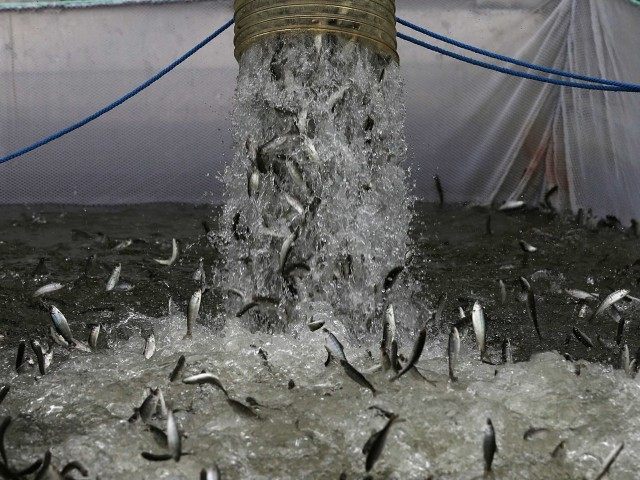LOS ANGELES — California’s State Water Resources Control Board (SWRCB) on Tuesday announced the outline of a revised Sacramento River Temperature Control Plan that takes into account the needs of both farmers and environmental interests.
Under the new plan, a small amount of water releases from Shasta Dam into the Sacramento River will continue through summer, providing farmers at least some of the water they need to get through the growing season. The plan also ensures enough water will remain in Shasta Reservoir, at a slightly upward-revised temperature of 57 degrees, to protect winter-run Chinook salmon.
Last week, SWRCB Executive Director Tom Howard unilaterally suspended the initial river temperature plan after equipment used by the U.S. Bureau of Reclamation recorded faulty temperatures in the Sacramento River. While environmental interests had praised the initial suspension of the plan, farmers and some Central Valley cities claimed that the suspension seriously threatened agricultural water supplies during the height of growing season.
In its announcement of a revised plan, the Board said that dealing with the severity of the state’s record drought “will require maximum cooperation, collaboration and creativity from water users to allow for water transfers and exchanges to meet the most critical needs.”
“This year is all about balancing unavoidable bad risks across the board and choosing a careful course given the uncertainties of what the summer will bring,” Will Stelle, West Coast Regional Administrator at NOAA Fisheries, said in a statement. “As we do so, we are collectively determined to avoid last year’s loss of nearly the entire population of spawning winter-run Chinook salmon because of high water temperatures.”
Under the terms of the revised plan, water releases from Keswick Reservoir will target 7250 cubic feet per second, ensuring enough water for both the Chinook salmon and California’s water users. The plan also slightly revises the temperature target to 57 degrees from 56 degrees. In a May 29 letter to Reclamation, Howard conceded that a 56 degree target was likely “impossible to meet.”
Aubrey Bettencourt, executive director of the nonprofit California Water Alliance, described the reaction to the plan by both farmers and environmental groups as a “collective but cautious sigh of relief.”
“It’s a small step, but it’s significant,” Bettencourt said. “Communities and water authorities are still under tremendous pressure to make this new plan work in the middle of a crisis. This is far less water than stakeholders had previously and unanimously agreed upon, but they’ll strive to try to make it work.”
The revised plan still requires formal review by both federal and state agencies. According to the Board, the Bureau of Reclamation will submit the revised plan on either Friday or Monday to both the National Marine Fisheries Service and the U.S. Fish and Wildlife Service to ensure the plan complies with the federal Endangered Species Act. The California Department of Fish and Wildlife will be asked to ensure the plan complies with the state ESA.
“We hope this decision marks the SWRCB’s start for unwinding the tangled web of regulatory mandates and conflicting orders affecting California’s water supply before fish or people are irreparably harmed,” said Bettencourt.

COMMENTS
Please let us know if you're having issues with commenting.